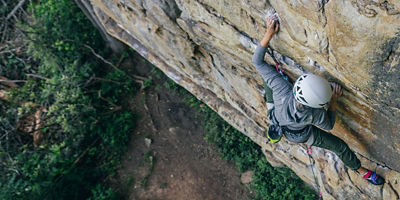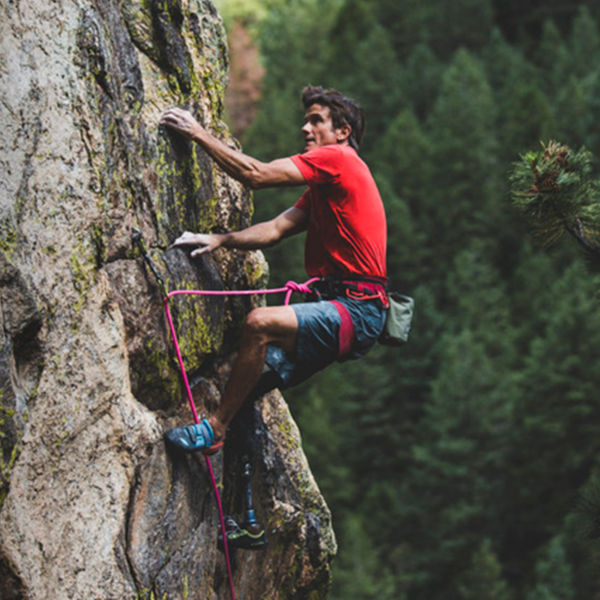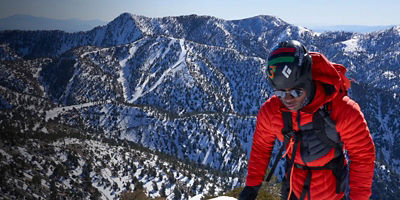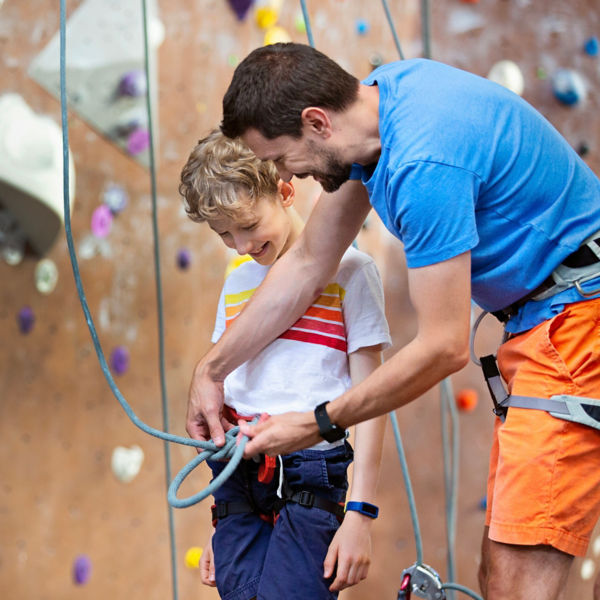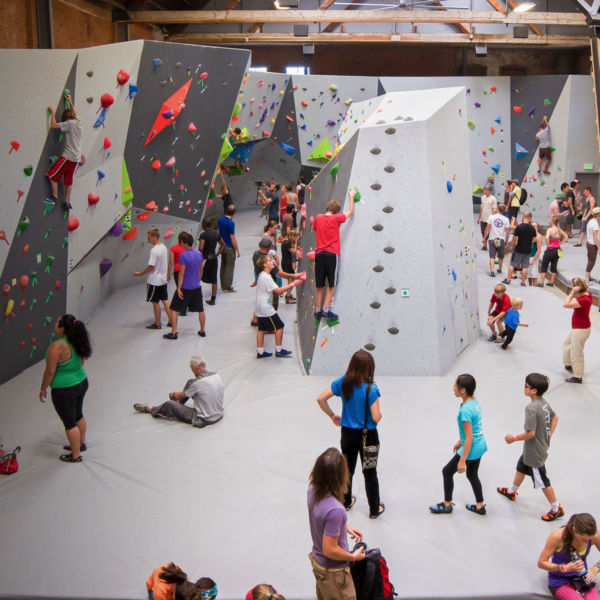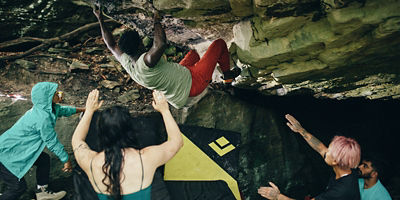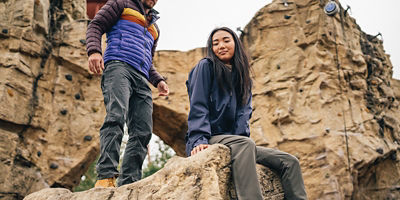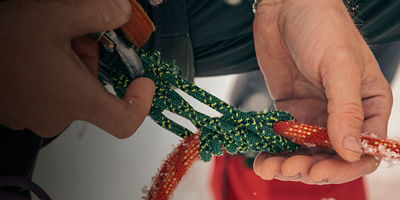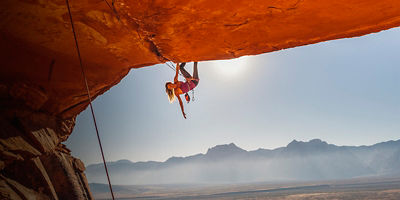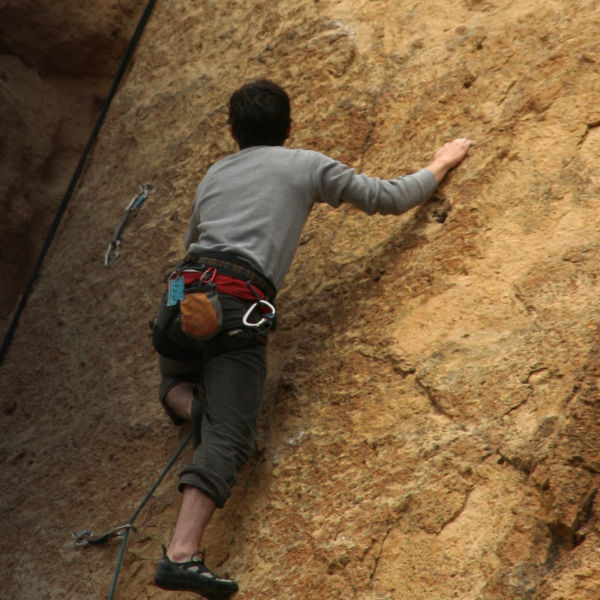
Buying your first carabiners as a new climber can be deceptively complicated. There are dozens of types of carabiners out there, each with slight differences in shape, size, and weight. These factors make them well-suited to certain uses and a poor fit for others. Here’s what you need to know to choose the right ones.
Here’s what this guide covers:
- Understanding Carabiner Strength Ratings
- Types of Carabiner
- Carabiner Weight: Does it Matter?
- How to Choose the Right Carabiners
Understanding Carabiner Strength Ratings
All carabiners that are safe to use for climbing must receive a European Conformity (CE) and/or Union Internationale des Associations d’Alpinisme (UIAA) strength rating. You’ll see those ratings on the spine of a carabiner—the three numbers indicate how much force the carabiner can take in a lengthwise direction, a cross-loaded direction, and while open.
You’ll see different numbers on different carabiners, but all of them are tested for strengths that vastly exceed what a climber could produce in a fall. Any UIAA- or CE-rated carabiner is safe to use for climbing as long as it’s closed and loaded in a lengthwise direction. The only time you might want to consider the strength ratings is if you’re considering two carabiners with the exact same price, weight, and functionality and are looking for a tie-breaker.
Any carabiner that’s not marked with a rating, or is labeled “Not for Climbing,” should never be used in a technical climbing application.
Carabiner Shapes
One of the first things you might notice about carabiners is that they come in a variety of shapes. Each one has its pros and cons.
Oval Shape
Oval-shape carabiners are symmetrical with a semi-circle curve at the top and bottom. This is the original carabiner shape; they’re inexpensive, and their wide curves mean they can hold a lot of gear and accommodate a variety of hitches. However, they can be a pain to clip while lead-climbing because it’s hard to tell at a glance if they’re upside-down or right-side up. Another con: oval carabiners tend to be heavy.
D Shape
This is the strongest shape of carabiner out there and one of the most versatile. Tapering funnels gear toward the spine of a D-shape carabiner. That and the wide gate opening make them easier to open and close than oval-shape carabiners. However, like ovals, they tend to be on the heavier side.
Asymmetric D Shape
These are essentially D-shape carabiners but with one smaller tapered end, which helps reduce weight and provide a wider gate opening than conventional D-shape or oval-shape carabiners. Because they’re strong, lightweight, and versatile, asymmetric D-shape carabiners are very popular. The only con: They also tend to be pricier than other versions.
Pear Shape or HMS
There are lots of carabiner shapes out there, but the classic pear-shape carabiner is notable for its big gate and wide, rounded top edge, which easily accommodates hitches, belay devices, and plenty of gear. It’s often called an “HMS carabiner” because it’s sized to accommodate a belay hitch called a Munter hitch, or Halbmastwurfsicherung (HMS) in German.
Because they’re big and heavy, locking HMS carabiners tend to be overkill for many uses. However, they make great belay and rappel carabiners, and their ease of use makes them a good choice for setting up top-rope anchors.









